
"Why is it important to empower and encourage more girls and women into the great outdoors? The point is not to tick a box or achieve a particular gender ratio, but because it's great for our bodies and minds". On International Women's Day, Keri Wallace celebrates the strides made towards greater female participation in the outdoors, and looks to the future.
In the 1800s it was generally accepted that women were inferior to men - less intelligent, less courageous and less determined, making them unfit for any kind of physical endeavour or responsibility, let alone the rigors of mountaineering or alpine climbing. But by the closing decades of the 19th century, a growing number of women were participating in these sports and the first all-female climbing parties had arrived on the scene. Lizzie Le Blond was among the first women to practice 'man-less-climbing', traversing the Piz Palu (AD, 3,905m) with Lady Evelyn McDonnell in 1900.
To celebrate International Women's Day, we have taken the opportunity to draw together some of the key women's climbing events, tours and networks for 2020
I owe the mountains a supreme debt of gratitude for knocking me from the shackles of conventionality
Just ten years later the first women-specific climbing attire had become available – the 'convertible skirt'. 'By undoing the waist straps and the studs…the discarded skirt became a well-fitting cape. In this way a woman mountaineer could dispense with her skirt whenever a difficult bit of climbing had to be tackled, and yet be garbed according to the demands of convention when returning to civilisation' [Unjustifiable Risk? The Story of British Climbing, Simon Thompson].
A quick glance at the women's section in the local outdoor shop reveals quite how far we have come since these early days!
Celebrating progress
Today is International Women's Day, the purpose of which is to strive for equality and celebrate progress - and celebrate we should. According to the most recent surveys of outdoor participation, the level of involvement by women is on the rise, reaching 31.2% in mountaineering/scrambling, 32.8 % in fell running, 41.3% in rock climbing/bouldering, and a whopping 46.8% in 'hill and mountain walking' (Active Lives carried out by Sport England has surveyed 175,000 people annually across England to create a data-set so far spanning 2016-2018).
Representation of women in the outdoor media has also changed in step, and as a community we are now wowed by unparalleled female achievements, blessed with many talented role models and inspired by women in key positions (for example in the British Mountaineering Council, Fell Runners Association, the Rambler's Association and UKClimbing, to name but a few). There is also a growing recognition of the need to look back through time and address our skewed history, painting women back into the picture.
Last month, the women's Pinnacle Club (founded in 1921) was awarded a National Lottery Heritage Fund grant, to create a multimedia archive and mark its centenary in 2021. The club's history charts a journey of female emancipation and independence embodied in journals, photographs, films, letters and the memories of its members, some now in their 80s and 90s.
"We hope the archive will help to highlight women's longstanding involvement and achievements in the sport as independent climbers in their own right" says Pinnacle Club President, Alex Nicholson.
The project also aims to inspire women of all ages and backgrounds "to be more adventurous and get out into the mountains" says Club member and Centenary coordinator, Val Hennelly.
This year has also seen the launch of the Women in the Hills (WITH) network, bringing together academics from the University of Newcastle, University of Manchester, and Edge Hill University with practitioners and stakeholders to characterise the factors that have shaped women's experiences from the early 1800s to the present day, and working to produce a series of guidelines aimed at improving women's access to upland recreation.
The scope of WITH will also include women's creative responses to upland landscapes - poetry, prose, non-fiction, nature writing, music etc.
"Historically, women's narratives about their experiences in the hills have been largely ignored, their accounts missing from the accepted record of upland literature (dating back to the eighteenth century). Instead, the people who author and feature in the stories about upland landscapes tend to be men. By demonstrating that women have always been walking, climbing, and mountaineering - and have written extensively about their experiences - we hope that WITH will be able to help contemporary women feel more like they belong!" says Kerri Andrews of Edge Hill University.
Research suggests that there are still widely held gendered expectations, roles and stereotypes which impact on young women getting involved in outdoor adventure. Judging girls on their appearance rather than their competence, the assumption that girls can't be strong and the accepted norm that some activities are more for boys, are just some of the more subtle influences that over time, left unchecked, gently stifle a sense of confidence, competence and belongingness in mountain environments
Mind the Gap
In 1967 Katherine Switzer became the first woman to complete the historic Boston marathon as a numbered entrant. It was another five years before women were officially allowed to compete. It has taken a further 50 years for road running to become a sport with 50/50 gender participation – this in an accessible urban sport with a strong club culture and enormous commercial investment. As a comparison, trail running race entries reveal female participation in the range of 35% to below 15% in the most technical and ultra-distance events.
In mountaineering, some UK clubs have long been mixed (e.g. Fell and Rock Climbing Club and the Climbers Club), while other traditional bodies only changed much later (the Alpine Club began admitting female members in 1975 in a merger with the Ladies' Alpine Club, and the Wayfarers Club not officially until 2018). Mountain sports are also technical by comparison, time-consuming and remotely located. It is hardly surprising therefore that we don't yet see the same proportion of women involved in mountain sports, that we do in road running.
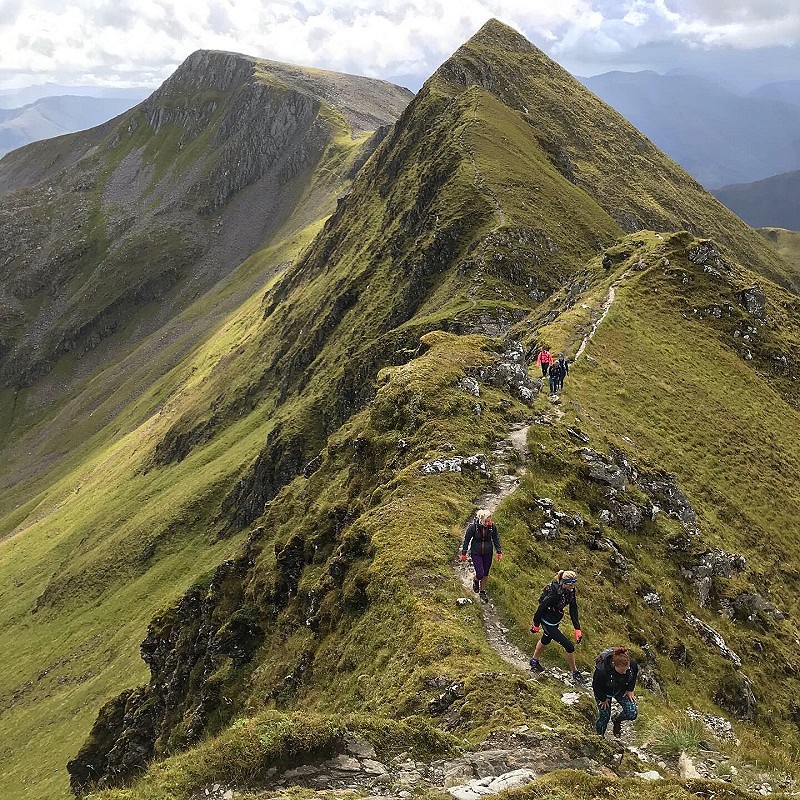
According to the Getting Active Outdoor survey (Sport England 2015), while more women than men use the outdoors for 'emotional, exploratory and learning' purposes, men far outnumber women in all other categories of outdoor users, with women representing only 35% of participants in outdoor sports across the board. As a proxy-measure of participation, only 26% of current BMC members and 13% of UKC/UKH users (as per the last Reader Survey) identify as female.
This gender gap is even more well-documented in outdoor leadership pathways, where less than 25% of outdoor instructors are female (and only 7% of MIA/MCI are women). Even though the first female British Mountain Guide, Gwen Moffat, qualified as far back as 1950, there are still only 10 female BMGs nationally.
"Across all NGBs there is a drop-off with women in instructional roles as you work up the qualification levels" says Doug Cooper, Glenmore Lodge. The Scottish national centre held their first Women in Adventure Sport (WIAS) conference in 2016.
"We invited experienced female outdoor instructors and participants to tackle the questions about enablers and barriers, to proactively tackle the gender gap in both leadership and participation. As a result of this work, we started delivering women-specific participation courses, actively employed more female directors and tutors of NGB courses, and now deliver the WIAS conference annually to explore, share ideas and support women in the outdoors" says Cooper.
Despite being widely documented, there is a lot of conjecture and anecdote around what underpins this gender gap. Peer-reviewed research points to the fact that the answer is far from simple!
"Academic studies continue to highlight historical and ongoing challenges faced by women in outdoor adventure, including mountain sports, which can involve gender socialisation, access to the outdoors, perceived confidence, family constraints and access to others with whom to adventure" says Dr Emma Boocock, Co-Investigator and Lecturer in Sports Coaching at Northumbria University.
Contemporary 'barriers' to gender parity are more intangible than they were historically, and appear to be more 'perceived' than literal. In a 2020 survey of the Scottish Women's Walking Group, 87% of women felt that 'mental barriers' held them back from hillwalking or 'stopped them altogether', with 60% of the 175 respondents agreeing on multiple issues. Of the most common, 45-49% were anxious about their fitness and worried about 'holding others back' in a group setting, while 34% felt restrained by low confidence in their navigational ability.
Our women's guided trail running company Girls on Hills took over 300 women trail and fell running last year alone. We observed that many of our female clients appeared to lack confidence. "A large proportion of our ladies believe they aren't fit enough or strong enough to run in the mountains, when in reality they are usually more than capable and, in many cases, are even very experienced" says Co-Founder, Nancy Kennedy. "There is certainly a tendency to play down achievements and expertise, as well as to underestimate ability."
Feedback from the popular Women's Trad Festival (WTF), which last year sold out 'instantly', reports that "over 50% of attendees found they were more capable than they previously thought. One in four women also said the festival helped them overcome fear or anxiety," says Hetty Key of the WTF.
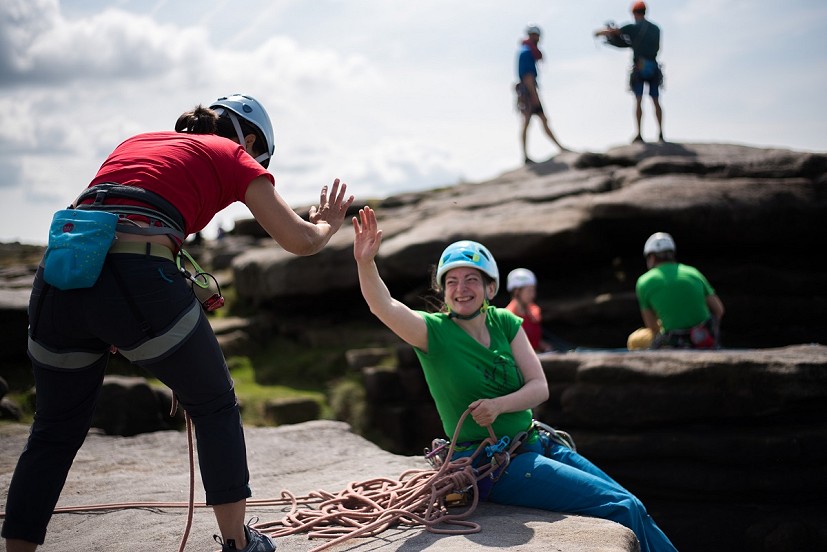
It is important however, to recognise that "women are not a bunch of shrinking violets" says Kennedy. "I think 'perceived' low confidence is really just a tendency to worry what others will think, and an overriding desire to have all the answers – to know what to expect and to be fully equipped to perform."
Perhaps then we are viewing female behaviours through a male lens, and instead of expecting women to 'man up' and strive for improved confidence and more self-promotion, we should be looking to change organisational systems and practices so that women are better supported and equally enabled as they are.
"This discussion often comes down to fairness. If we want equality, things have to be the same for everyone. Except, 'the same' often doesn't equate to fair. Sameness only parallels with equality if everybody starts from the same place" says Katherine O'Brien, Project Manager of Instructor Diversity at The Outward Bound Trust.
"Equity is a different concept; it is about fairness and making sure that people get access to the same opportunities. Sometimes historical differences can create barriers, and to move towards equality we first need to ensure equity by creating opportunities for groups who were previously restricted in some way" says O'Brien.
The only way is up
The good news is that these opportunities are out there. Independent training providers, national centres, sports councils, governance organisations, regulatory authorities and funders are making evidence-based adjustments to improve women's access to recreational and professional pathways.
Mountain Training began their Women in Mountain Training initiative in 2015 and are now writing a Women in Mountain Training Strategy to better meet the needs of women entering the instructional system.
"We are keen to better understand and address the difference in participation levels in walking and climbing, compared to the number of our qualification holders who are women" says John Cousins, CEO of Mountain Training UK & Ireland
"We are in the development phase of the strategy at the moment and hope to have it finished later this year."
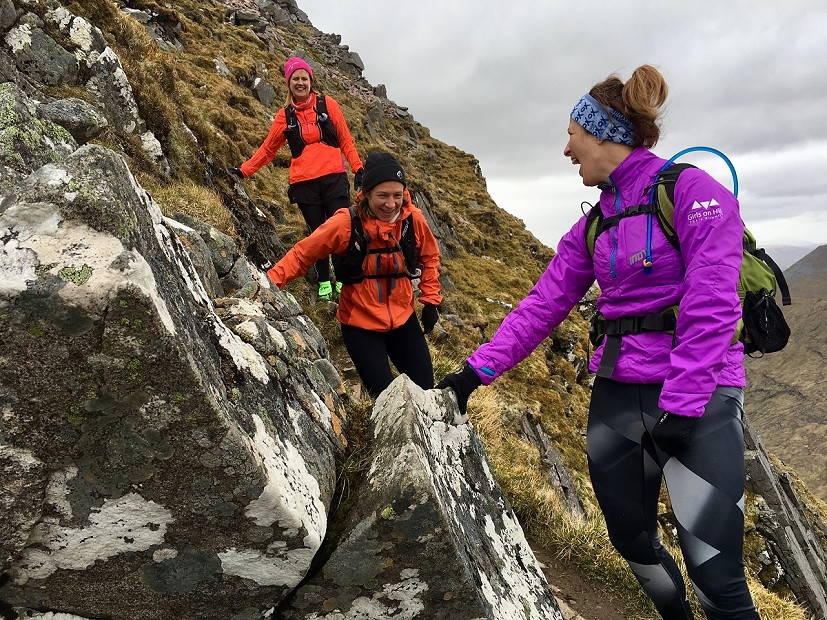
"Initiatives which increase female participation, representation and leadership by women offer a different image and narrative around what it means to be female, which hopefully over time will shift out-of-date perspectives and create a more empowering environment, which supports women's development in the outdoors" says Katherine O'Brien.
One popular approach is the delivery of single-gender activities and courses. The national outdoor centres, Plas y Brenin, Tollymore and Glenmore Lodge, also now all offer women-specific courses, ranging from climbing to winter skills.
"There is a definite need for women specific courses" says Cooper. "They provide an environment that some women find 'safer' and more 'comfortable' to participate in. We are well aware that this is not required by all women, but for some it can make a real difference. We generally find this is more useful at the introductory end of participation, but that said, we get plenty of requests for women-specific intermediate and advanced courses. They are not about excluding others but about tailoring to women specifically, supporting physiological, psychological and sociological wellbeing."
"Single gender courses can be controversial and some suggest they reinforce gender divisions. But our research found that women-only spaces provided people with an environment that was conducive to learning. There is also evidence to support the value of all-female environments in terms of physicality and empowerment" say Dr Emma Boocock, Dr Zoe Avner & Dr Linda Allin of Northumbria University.
There are many single-gender social movements such as The Adventure Syndicate, Girls on Hills, Adventure Queens, Love Her Wild and Wonderful Wild Women which showcase authentic female adventuring and empower women of all ages, backgrounds and abilities to join in. But how exactly do these community and recreational groups facilitate access?
The Scottish Women's Walking Group (SWWG) is a women-only online community of over 15,000 members, and is growing by an average of at least 100 newcomers every week. "Our walks are all organised by members, so any one of us can arrange a walk if and when we please" says Heather Dunnell, Founder of SWWG.
"That way we can choose the location, distance and difficulty to suit our own levels of fitness and experience. We have no 'leader' on the hill as such and there's no need for anyone to feel left behind - no matter how unfit you think you are, there's always lots of others in the same boat willing to walk with you."
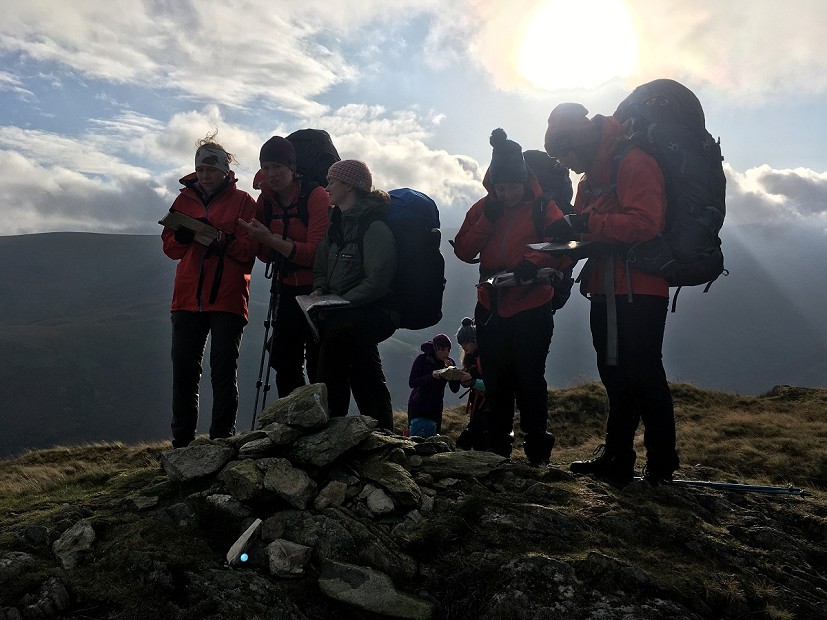
In a survey of its members, 98% said that SWWG group events had 'helped improve their experience of the hills', with 72% of respondents agreeing on multiple ways by which the group had facilitated their participation – including walk variety, flexibility, low commitment and an informal feel. Out of a choice of 10 options, 45-50% of all respondents agreed in describing women-only groups as 'more supportive', 'less competitive', 'less pressure to be fit or fast' and somewhere they were able 'to talk more openly/freely' than in mixed groups.
"There's a different vibe in a women-only group" says Dunnell. "We're generally less competitive and more supportive of each other. The conversations we can have are different too. I think having somewhere safe we can connect with other women is important for our wellbeing, and is something we have lost in our modern world."
Perhaps surprisingly, over 25% of the women surveyed listed 'personal safety concerns' as a reason for not joining mixed-gender walking groups, intimidated by the idea of being the only woman or in a minority within a group of men.
"I wouldn't feel comfortable arranging to meet men I'd never met in a remote place" confirms Dunnell. This same concern might also prevent some women from staying a bothy alone - something that might not even occur to most male hillwalkers.
Community groups and sports clubs provide a natural way for women to meet like-minded individuals, as well as to test their skills and their limits. The Ladies Scottish Climbing Club (LSCC) is the oldest all-female outdoor institution in the UK, and continues to thrive today.
"In the LSCC we want to make sure that women are self-reliant on the hill; able to make their own decisions about routes, technical difficulties, weather, navigation, and ensure that they have the skills to do so. We put on training events for members and have a real mix of meets throughout the year - it makes you realise that you can, because you meet others who have!" says Marieke Dwarshuis, LSCC President.
One observation in favour of women-only spaces is the popularity of these courses and events. The Women's Climbing Symposium (WCS), founded by champion boulderer and Olympic hope Shauna Coxsey began with just 80 attendees in 2011 and now attracts several hundred every year in a sell-out celebration of women in climbing. "The reason I started the event was because I was coaching women who were experiencing similar barriers. Every year we survey participants and ask 'do you still want a women's only event?' and every year it's always a YES!" says Coxsey.
What women want
Not all the same thing, that's for sure! Some women don't like women-only clubs and courses, and it's definitely not for everyone. Variety is the spice of life after all, and learning about and enjoying the mountain environment in mixed gender groups brings a different and valuable set of benefits, not least the opportunity to make mixed gender friendships. The availability of choice is also critical in avoiding reverse gender bias and furthering gender stereotypes.
"As we approach the centenary of the Pinnacle Club, we believe it is as relevant today as it was 100 years ago. Members describe the very different and beneficial dynamic when climbing with women, but many members also belong to mixed clubs and climb with men! I feel that having choice is fundamental for the development and progress of our sport" says Val Hennelly.
The organisers of the Women's Trad Fest take this a step further and generate a reverse-gender environment for their participants. "We feel strongly that it is important to welcome all genders at our festival - this is crucial when working towards an equal and inclusive society. We intentionally invert the ratio, ensuring around 10% of our leaders at the festival are male. As well as being symbolic, this allows a glimpse of what other genders experience the rest of the time!" says Hetty Key.
Grassroots thinking
To grow our community of female outdoor adventurers, we first have to water our roots.
"Research suggests that there are still widely held gendered expectations, roles and stereotypes which impact on young women getting involved in outdoor adventure. Judging girls on their appearance rather than their competence, the assumption that girls can't be strong and the accepted norm that some activities are more for boys, are just some of the more subtle influences that over time, left unchecked, gently stifle a sense of confidence, competence and belongingness in mountain environments" says Katherine O'Brien of the Outward Bound Trust.
There is also a growing body of research from the educational sector that reveals a decrease in confidence levels in school age girls, relative to boys - something which is widely regarded as a contributing factor in the underrepresentation of women in STEM careers, as well as leadership roles in business, politics and law in the UK. The same research has also highlighted the importance of role models for this age group. In her Barefoot Britain challenge, influencer and Girlguiding UK ambassador Anna McNuff ran the length of the UK barefoot, covering the distance of 90 marathons. In so doing, she spoke to and inspired 1,700 Rainbows, Brownies and Girl Guides on her journey, spreading the word that 'adventure is as much for girls and women as it is for boys and men.' Empowerment initiatives such as these have enormous potential to impact our future runners, climbers and mountaineers.
Girlguiding UK delivers Walking and Climbing Schemes and The Outward Bound Trust now run a Women's Outdoor Leadership Course, with the aspiration of training more female instructors, who will in turn become an inspiration to the thousands of girls who attend their courses each year.
So why is it important to empower and encourage more girls and women into the great outdoors? The point is not to tick a box or achieve a particular gender ratio, but because it's great for our bodies and minds. The 2017 Mental Wellbeing Survey carried out by Women in Adventure found that 99.7% of women agreed that the outdoors had a positive impact on their mental wellbeing and 95% reported a positive impact on self-esteem.
More women than ever before are enjoying the UK mountains and experiencing the many health benefits of the outdoors. In terms of inclusivity and accessibility, we are riding on the crest of a new wave of visibility, investment and equality that is impacting all areas of women's sport. And I for one think it's a very exciting time to be a woman in the mountains.
It's just a shame that they don't make 'convertible skirts' any more. Who wouldn't want a climbing skirt that turns into a superhero cape! Yes please.
About Keri Wallace
Keri Wallace is an experienced fell runner and a fell/trail running guide with Girls on Hills in Glencoe. She is also a keen rock climber and member of the Glencoe Mountain Rescue Team. She is a qualified summer mountain leader and climbing instructor, with Fell/Trail Leadership in Running Fitness (FLiRF) accreditation from the Fell Running Association. Girls on Hills Ltd delivers skyrunning courses and guided skyrace recce events for Skyline Scotland
- INTERVIEW: Anna Wells on the Winter Munro Round 25 Mar
- Top Tips: Camping With Kids 12 Jun, 2023
- REVIEW: Book Review: Voices From the Hills 19 May, 2023
- My Move to the Mountains: Life in Lochaber 16 Mar, 2023
- Hut to Hut in the Tyrol - A Family Adventure 30 Aug, 2022
- INTERVIEW: Nicky Spinks on the Lake District 24 Hour Record 9 Sep, 2021
- On the Ramsay Round with the Black Trail Runners 19 Aug, 2021
- INTERVIEW: In pursuit of purity: going solo on the Winter Bob Graham Round 25 Feb, 2021
- Desert Island Peaks: Keri Wallace 18 Jan, 2021
- Walk Before You Run - winter skills for hill runners 21 Dec, 2020

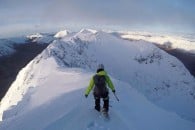

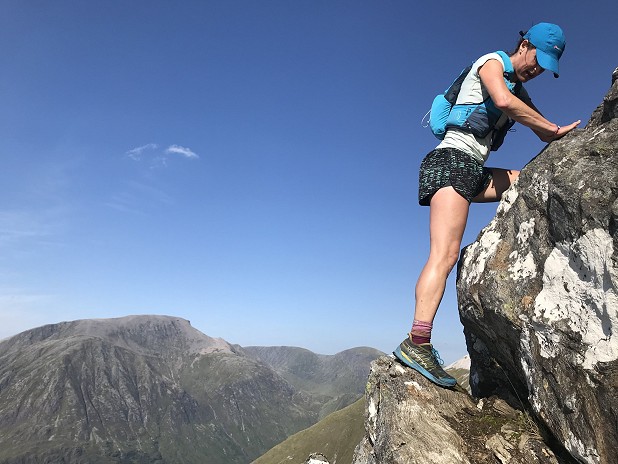
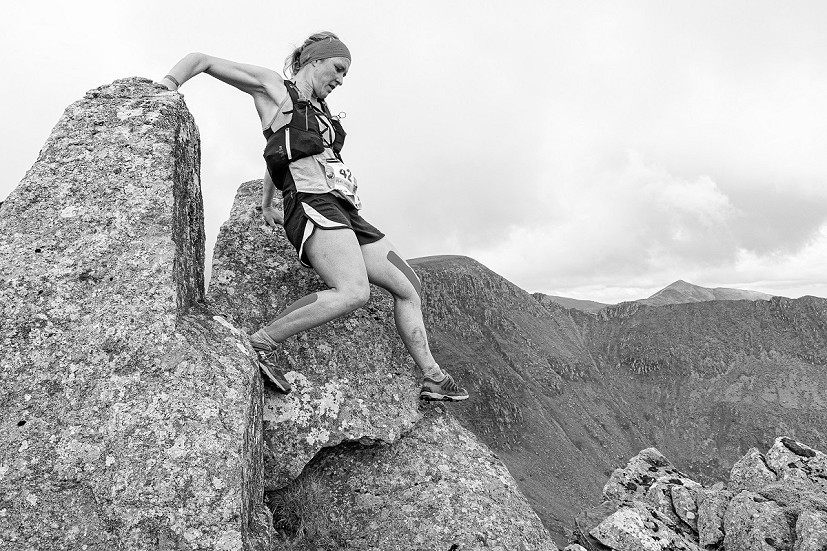
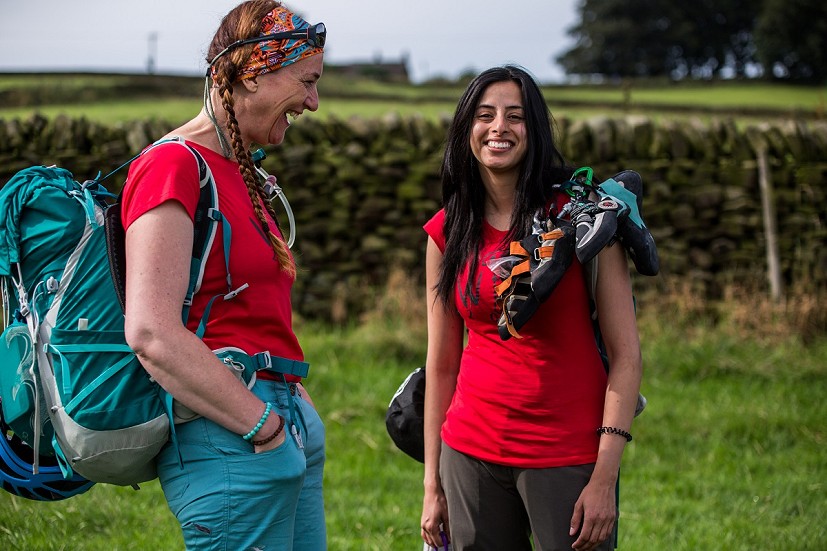
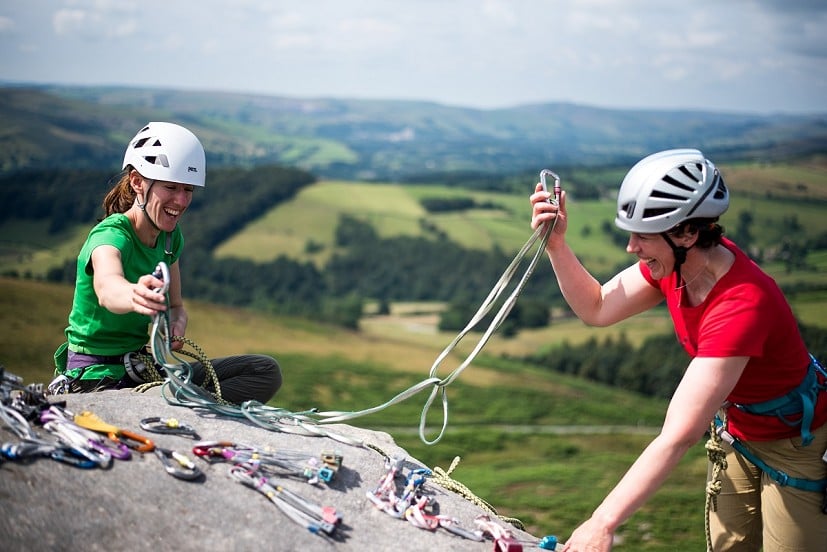
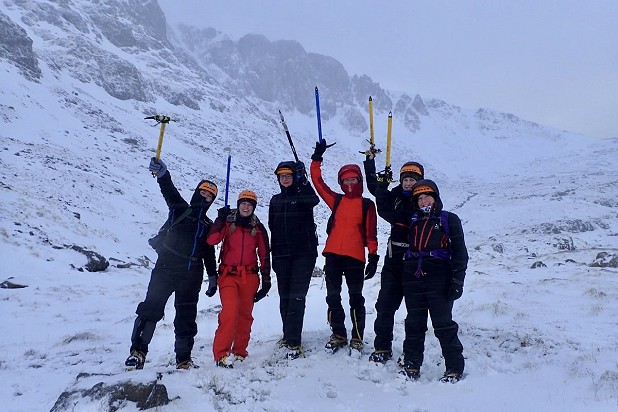



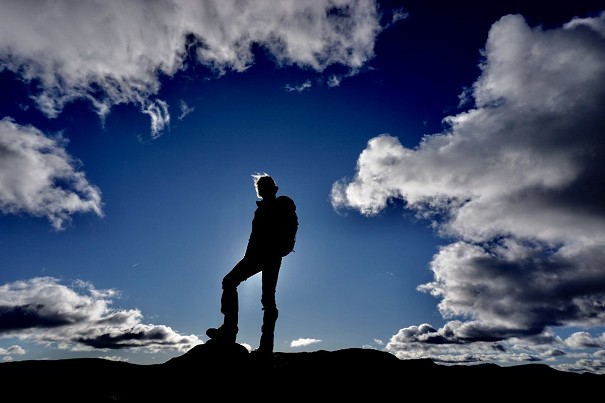
Comments
Good article, if a little lengthy. As someone who has always been confident and independent it made me think more about support out on the hills or crags.
And as one of the 13% my answer to the question "what women want" is.........
........a proper fitting and robust shell jacket and mountaineering trousers..That really would be a giant leap for womankind
would have been interesting to have a comparison with other countries in Europe & N America, but maybe that would be another article
Coel seems a bit slow off the mark today 😉
Fabulous article, thanks very much.
The article says: "One popular approach is the delivery of single-gender activities and courses" and:
"There is a definite need for women specific courses" says Cooper. "They provide an environment that some women find 'safer' and more 'comfortable' to participate in. We are well aware that this is not required by all women, but for some it can make a real difference. We generally find this is more useful at the introductory end of participation, but that said, we get plenty of requests for women-specific intermediate and advanced courses. They are not about excluding others but about tailoring to women specifically, supporting physiological, psychological and sociological wellbeing."
"Single gender courses can be controversial and some suggest they reinforce gender divisions. But our research found that women-only spaces provided people with an environment that was conducive to learning. There is also evidence to support the value of all-female environments in terms of physicality and empowerment" say Dr Emma Boocock, Dr Zoe Avner & Dr Linda Allin of Northumbria University."
Okay, let's change a few words here and see what happens: "There is a definite need for male specific courses" says [someone]. "They provide an environment that some men find 'safer' and more 'comfortable' to participate in. We are well aware that this is not required by all men, but for some it can make a real difference."
And: "They are not about excluding others but about tailoring to men specifically, supporting physiological, psychological and sociological wellbeing."
How would such men-only course be received by the UK Climbing.com community?